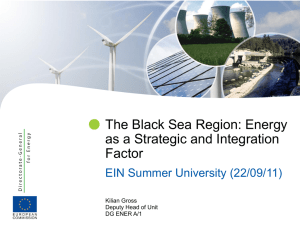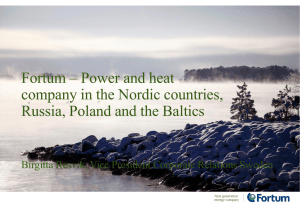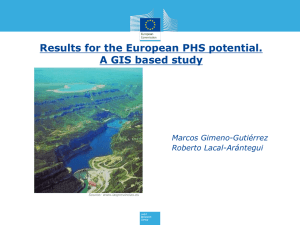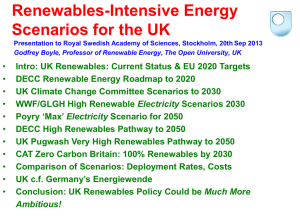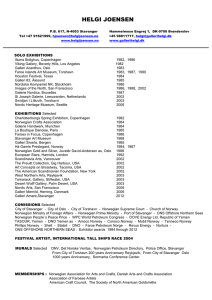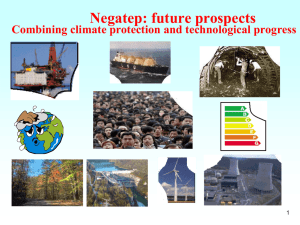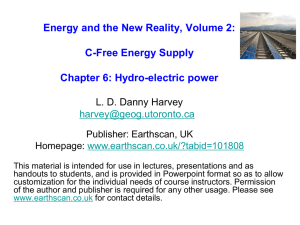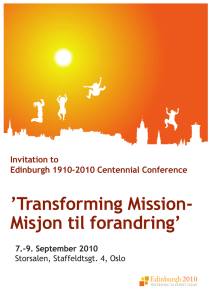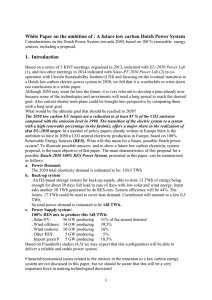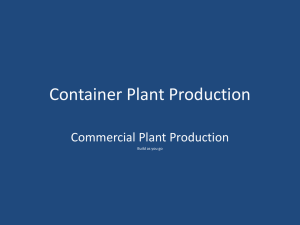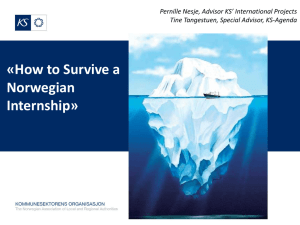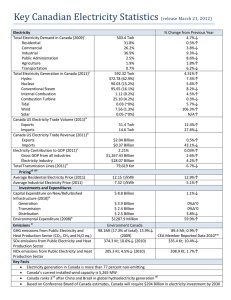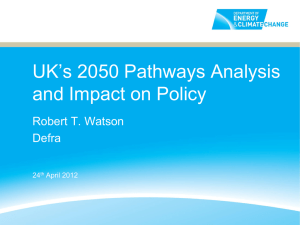EMPIRE- modelling the future European power system under different
advertisement
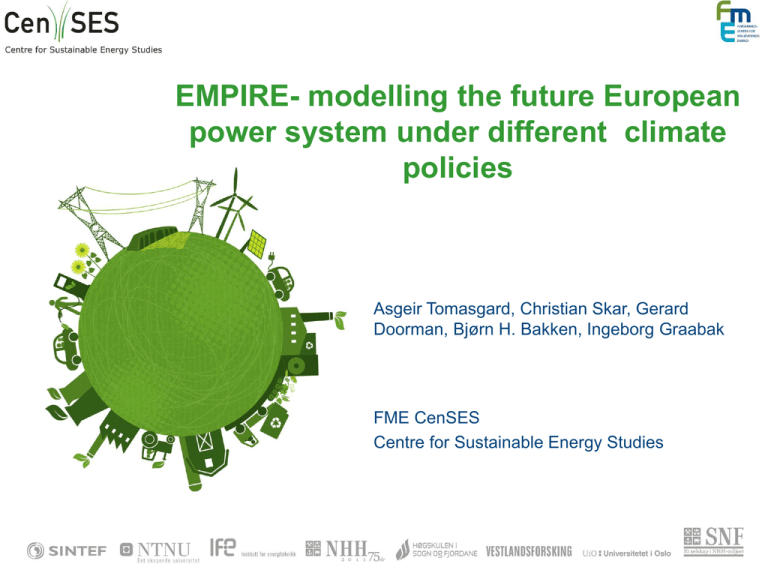
EMPIRE- modelling the future European power system under different climate policies Asgeir Tomasgard, Christian Skar, Gerard Doorman, Bjørn H. Bakken, Ingeborg Graabak FME CenSES Centre for Sustainable Energy Studies The transition to a sustainable power system Challenge The challenge for the energy system in years to come, is how to satisfy a continually growing global energy demand and at the same time reduce greenhouse gas (GHG) emissions. Technology choices (examples) • • • • Renewable energy Energy efficiency and saving Fuel substitution in transport Carbon Capture and Sequestration Policy instruments (examples) • • • Tax, e.g. a carbon price Subsidies, e.g. a feed in tariff Regulation, e.g. Emission Performance Standards Purpose of our study Evaluate the contribution of different policy scenarios on - Power markets and power demand - Generation expansion - Grid expansion - Emissions In particular look at Norway´s role in the transition The team The Ramona-EL power system model The GCAM tool • • • • Technologically detailed integrated assessment model. 14 geopolitical regions Emissions of 16 greenhouse gases Runs through 2095 in 5-year time steps Ramona-EL • Power system design and operation • • • • • Models each European country´s generation capacity and import/export channels, not physical lines Time horizon until 2050 – investments in 5 year steps Model operational time periods: demand, supply (stochastic wind and solar PV) and optimal dispatch. Taking fuel prices, expected load and costs as input Provides a cost minimization capacity expansion plan for Europe, detailed for each country Load profiles from ENTSO-E and national data Inflow, wind and solar profiles from national data Hourly supply and demand In total 4000 hours used to represent different dispatch situations over 50 years - 4 seasons - 24 hours sequences - Daily load patterns taken from 3 days per season + extreme days Scenario descriptions • Global 202020 scenario – A policy scenario inspired by the European 20-20-20 targets. • Renewable portfolio standards, energy efficiency improvements and share of bio fuel in the transportation sector are set for different regions across the world. • 450 ppm stabilization scenario – A policy scenario where the atmospheric concentration of greenhouse gases is limited to 450 ppm CO2-eq by the end of the century. Emission reduction is achieved by implementing a carbon price TWh European electricity demand 9000 8000 7000 6000 5000 4000 3000 2000 1000 Reference 450 ppm Figure 1: Europe (WE+EE) electricity demand for the different policy scenarios Global202020 209 5 209 0 208 5 208 0 207 5 207 0 206 5 206 0 205 5 205 0 204 5 204 0 203 5 203 0 202 5 202 0 201 5 201 0 0 2010 $/tCO2 CO2 prices $900 $800 $700 $600 $500 $400 $300 $200 $100 201 0 201 5 202 0 202 5 203 0 203 5 204 0 204 5 205 0 205 5 206 0 206 5 207 0 207 5 208 0 208 5 209 0 209 5 $0 Reference 450 ppm Global202020 Figure 1: Carbon dioxide emission price in Europe for the different policy scenarios Installed capacity in power market 2050 The Ramona-EL analysis Results for 2050 • Global 202020 scenario • 450 ppm stabilization scenario Energy mix 202020 Energy mix 450 The need for flexibility High variations in non-dispatchable renewable production from wind and solar PV Global 202020: 450 ppm stabilization: 21.4% non-dispatchable 14,2 % non-dispatchable Need flexibility and balancing • Seasonal • Weeks • Hourly • Shorter New infrastructure in 2050 - 202020 New infrastructure 450 Example: Power exchange European demand 4800TWh Norwegian demand 162 TWh New Norwegian cap. 20.1 GW Net export 29 TWh ure 1: The of electricity to and fromNorway Norway inin2050 in the 450 ppm scenario. Theexchange exchange of power from 2050 European demand 5800 TWh Norwegian demand 197 TWh New Norwegian cap. 20.1 GW Net import 7 TWh Flexible Norwegian energy as a service to Europe I Flexible reservoir Storage capacity of 85 TWh in the Norwegian reservoirs. This storage volume has most of the time at least 1020 TWh free capacity Hydropower plant DC cable Energy content (%) in Norwegian hydropower reservoirs (2002-2013) 100 Line pack 90 70 60 50 40 30 20 10 3 1 20 Figure 1: Energy stored in Norwegian hydropower reservoirs. (Data from NVE) 20 1 2 1 0 20 1 0 20 20 1 9 8 0 20 20 0 20 0 7 6 5 0 20 20 0 0 20 4 2 3 0 20 0 % of full (85 TWh) 80 Gas power plant Example: Natural gas exchange Figure 1: Illustration of the electricity production from natural gas in the four countries where Norway has an export pipeline (UK, Germany, France and Belgium) in the 202020 scenario (GWh/h). The possible inventory changes in a typical pipeline we looked at is in one hour approximately 9 GWh of electricity. Flexible Norwegian energy as a service to Europe II 16.00 14.00 12.00 10.00 8.00 6.00 4.00 2.00 0.00 0 5 10 15 20 25 30 : Illustration of the flexibility to change the inventory level in one of the large export pipelines Flexible reservoir Storage using linepack in gas pipelines: Flexibility of 2% within the hour, and 15% in 12 hours. For the given pipeline, this means that the inventory could be changed with approximately 134 GWh within 12 hours. Hydropower plant DC cable Line pack Gas power plant
